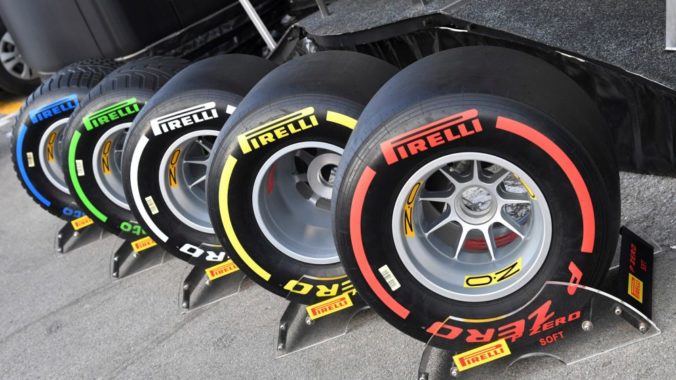Tyre strategy is a big part of every race weekend. It could make a break a race for some teams, so tyre compound is really important. Each driver is given 13 sets of tyres from the three dry compounds available each race weekend. They must use two different compounds during a dry race but they can use more if they wish.
Pirelli is the sole tyre provider for the sport. They provide seven different types of tyre compounds: five dry, or slicks, and two wet weather. The slicks are named C1 through to C5, with C5 being the softest, otherwise called the ultrasoft. The wet weather tyres are intermediate and wet. Softer tyres have more grip, but harder tyres last longer.
For a grand prix, Pirelli choses three of the slick tyre compounds that they think are best suited to that weekend’s track. The softest compound at that specific grand prix is represented by the colour red. The medium is represented by yellow, and the hard tyre is represented by white. However, tyre colours do not represent tyre compounds directly, because a red strip tyre could be any compound between C3 and C5 and vice versa.
Each Compound
The Ultrasoft is designed for use on tight and twisty circuits. It was introduced in the 2016 season and it has a rapid warm up time and a very big peak performance making it the faster and most grippy tyre compound, with the shortest life span.
The supersoft is ideal for slow and twisty circuits or when a high level of mechanical grip is needed. It has a reasonably fast warm-up time, which makes it the most ideal tyre for qualifying.
The soft compound tyre has the best balance between speed and grip and life span, with the edge going to performance quality. It could be used at the softest compound tyre at a high severity track, or the hardest compound tyre at low severity track or a street race.
The medium tyre rests on the higher side of the compounds, meaning it has less grip. It is most used at circuits that have high speeds, temperatures, and energy loadings. It has good adaptability which means it can be used at many different circuits.
The hard tyre is designed for the circuits that put the highest energy loadings through the tyres. This means the tracks with fast corners, abrasive surfaces and/or really high temperatures. It takes the longest time to warm up, and it has the least amount of grip but it has the longest life span.
The intermediate tyres are used when there is light rain, on a track with standing water and no rain, or on a drying track. They are the more versatile of the wet weather tyres. They can move 30L of water per second at 300kph. They are represented by a green stripe.
The wet tyres have a chunky tread for more grip. These tyres are only used in strong rain when there is no possibility for any other tyre compounds. They can move 85L of water per second at 300kph. They are represented by a blue stripe.

Leave a Reply